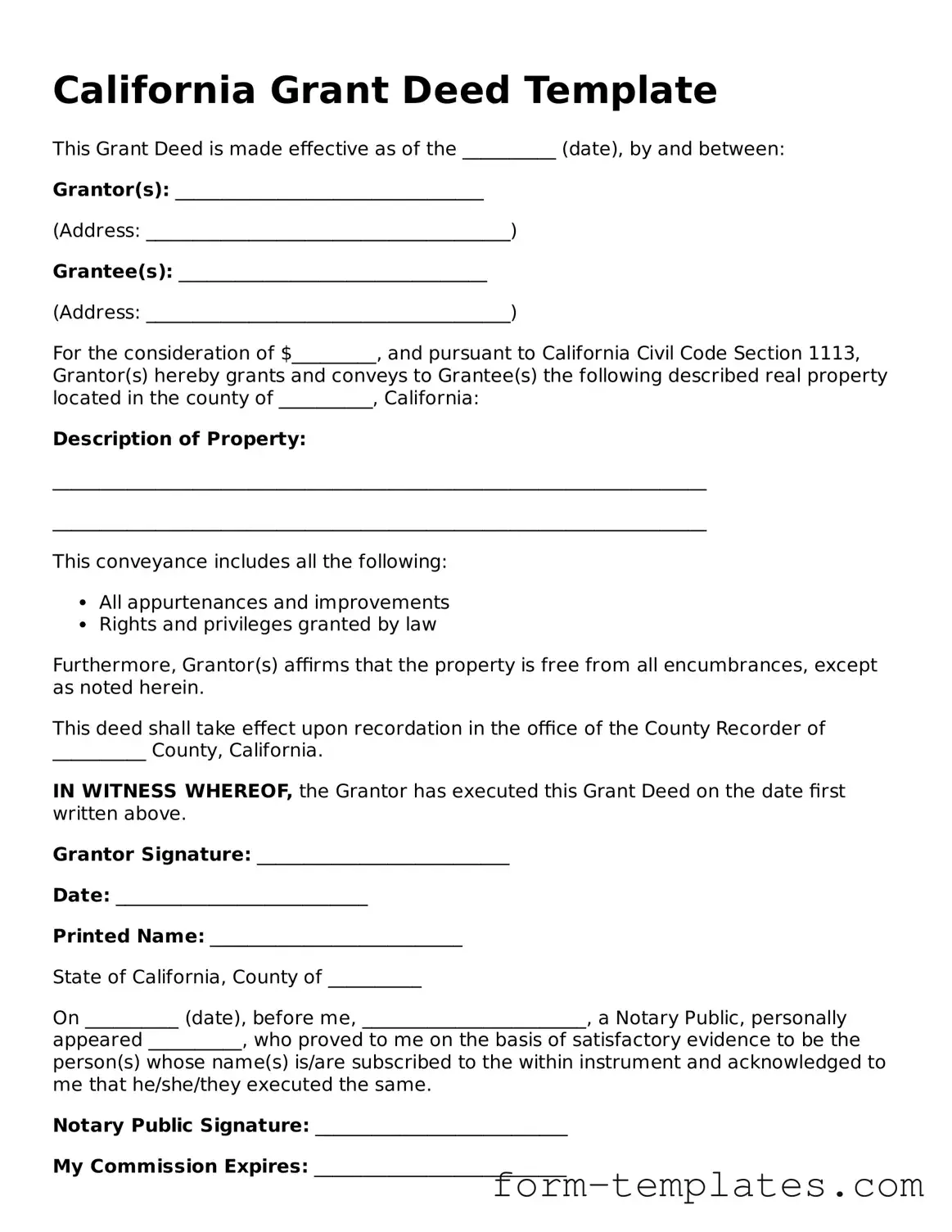California Grant Deed Template
This Grant Deed is made effective as of the __________ (date), by and between:
Grantor(s): _________________________________
(Address: _______________________________________)
Grantee(s): _________________________________
(Address: _______________________________________)
For the consideration of $_________, and pursuant to California Civil Code Section 1113, Grantor(s) hereby grants and conveys to Grantee(s) the following described real property located in the county of __________, California:
Description of Property:
______________________________________________________________________
______________________________________________________________________
This conveyance includes all the following:
- All appurtenances and improvements
- Rights and privileges granted by law
Furthermore, Grantor(s) affirms that the property is free from all encumbrances, except as noted herein.
This deed shall take effect upon recordation in the office of the County Recorder of __________ County, California.
IN WITNESS WHEREOF, the Grantor has executed this Grant Deed on the date first written above.
Grantor Signature: ___________________________
Date: ___________________________
Printed Name: ___________________________
State of California, County of __________
On __________ (date), before me, ________________________, a Notary Public, personally appeared __________, who proved to me on the basis of satisfactory evidence to be the person(s) whose name(s) is/are subscribed to the within instrument and acknowledged to me that he/she/they executed the same.
Notary Public Signature: ___________________________
My Commission Expires: ___________________________
